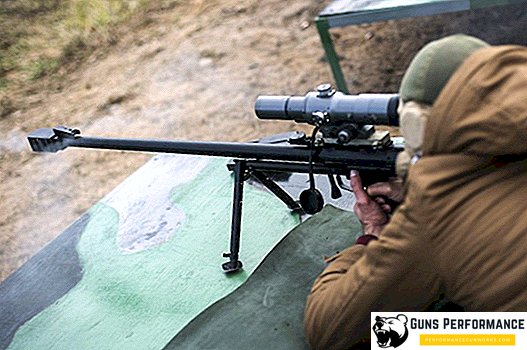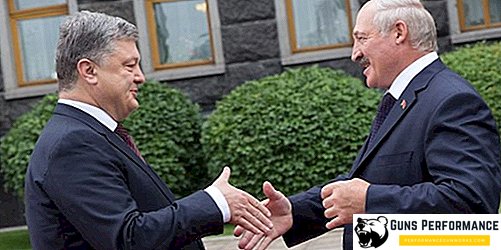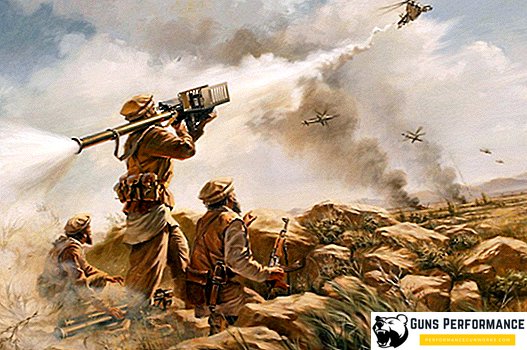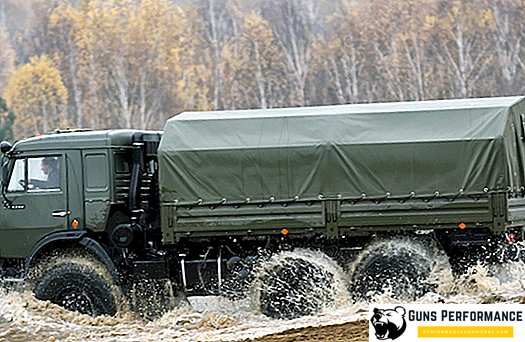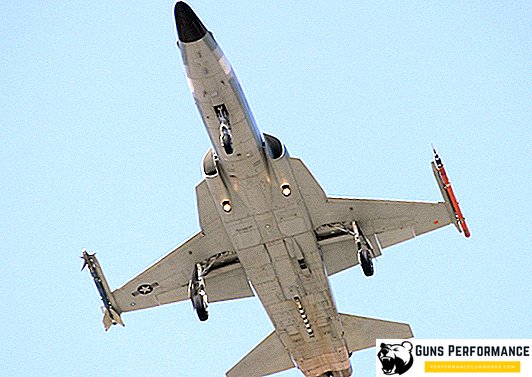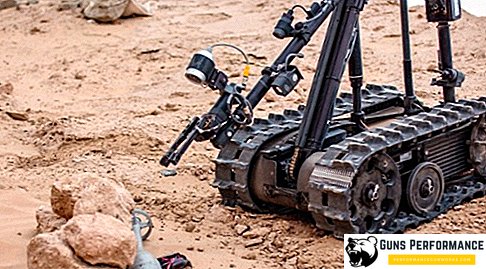The Argentine Republic today seems to us as one of the most stable and powerful states in Latin America. A strong state power, a developed economy and a stable international position are all acquisitions of the last 20-30 years. Up to this point, the second country in the territory and population of the South American continent, was a solid tangle of social and political contradictions.
Until recently, Argentina had the status of one of the most politically unstable states, where the political and economic reforms conducted by the government were replaced by periods of decline and stagnation. The main reason for this instability is the frequent change of political regimes. Higher institutions of state power, including the presidency of Argentina, became hostages of political conjuncture, losing their political weight and status.
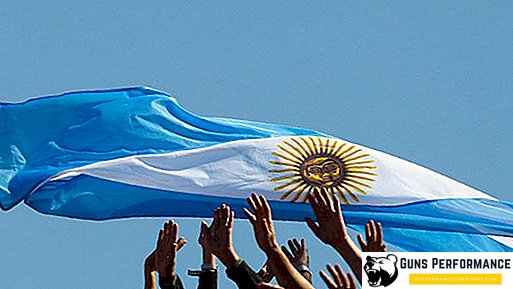
The beginning of the formation of Argentine statehood
The territory of today's Argentina has become known to the world thanks to the Spaniards. It was they who, after discovering these lands in the first quarter of the 16th century, for many years turned the vast territory east and south of the river La Plata into their colony. Over the next 250 years, these lands were part of the Peruvian viceroyalty, being part of the vast overseas possessions of the Spanish Empire. Administratively subordinate to the viceroy of Peru, the province of La Plata was in a depressed state for a long time. Nominal state independence came to this territory after the Spanish king Charles III turned the province of La Plata into a viceroyalty. The capital of the new overseas territory of the Spanish Empire was the city of Buenos Aires. Under the control of the viceroy of the province of La Plata came part of Bolivia, Paraguay and Uruguay, which are now independent and independent states.

Already in those years, the leadership of the province in the person of the viceroy showed sufficient independence in domestic policy. In a period of instability that arose in the world together with the First French Revolution, the colonial authorities of the province of La Plata tried to pursue a moderate foreign policy. The beginning of the Napoleonic wars epoch gave a start to large-scale political transformations in this part of the world. Napoleon's defeat of the metropolis and the overthrow of the Spanish monarchy in 1810 opened up new opportunities for the overseas Spanish colonies.
In spite of the fact that the supporters of the monarchy were strong in the country, new political forces were gaining strength in the viceroyalty of those who stood for the independence of La Plata from the Spanish crown. In May 1810, the Buenos Aires City Council establishes a provisional government - the Junta La Plata. The decision was caused by the desire to maintain order in the region at the time of the absence of a strong central authority in the metropolis. Despite the external image created by the Buenos Aires authorities' commitment to preserving imperial rule, irreversible centrifugal internal political processes began in the country. In July 1816, after a weakened Spain could not influence the political processes overseas, the National Congress of the United Provinces of La Plata declared the independence of the province of La Plata from the Spanish crown.

The first years of independence of the former colony can not be called calm. The country did not have a strict system of state central power, over which separatist tendencies were constantly buried. Paraguay, Uruguay and Bolivia constantly tried to break out of the orbit of political influence of Buenos Aires. With the tacit consent of the capital, in the above provinces their own, independent governments came to power. Uruguay in general, was occupied by Portuguese troops. Buenos Aires itself left the central, eastern, and southeastern regions under its control. All power in the troubled province belonged to the interim ruler, who since the declaration of independence and until the adoption of the first constitution of the country in 1826 was six.
The main internal political struggle unfolded between the Unitarians and the Confederates. The former called for one large unitary state, in which the parliament and the central government, headed by the president, become the main instruments of state power. The result of a lengthy debate and debate was the first constitution of 1826, declaring Argentina a Federal Republic. Accordingly, the first president appeared in the country, who became Bernardino Rivadavia. The first president of a formally independent Argentine state held his post for only a year and a half, from February 1826 to July 1827. An attempt by the central government to extend its influence to the rest of the country's provinces ended in failure. Decrees and orders of the president in the provinces were ignored. The action and strength of the Basic Law on the periphery were virtually absent. As a result of the strongest internal political crisis, the first president of the country was forced to resign.

In such a short time, the first president managed to carry out major reforms in the country, affecting the judicial system, the institute of education. For the first time in the history of Latin America, the institution of church authority was reformed, becoming the most important management tool for civil society for the ruling class. After the resignation of Bernardino Rivadavia, power in the country passed into the hands of the military, headed by General Juan Manuel Rosas. From this point on, the military will constantly be in the country in the first roles, becoming one of the most influential political forces.
Dictatorship, military junta, constitutional presidents in Argentina
The resignation of the first president of the country caused a chain reaction in the institutions of the central government. This was followed by the dissolution of the federal government. The country for a long 27 years was deprived of a centralized system of governance and became known as the Argentine Confederation. Formally, the duties of the president passed into the hands of the governor of the central province of Buenos Aires, who in 1829 became General Rosas. The republican form of government imperceptibly transformed into the dictatorship of one person, in charge of the provincial administration and foreign policy.

Periodically resigning from the post of governor, Juan Manuel José Domingo Ortiz de Rosas continued to be the Commander-in-Chief of the army of the Confederation and in fact alone ruled the country. The years of the reign of the first Argentine dictator - 1829-1852. The end of the dictatorship put another military coup, which was headed by the deputy commander - General Justo José Urkis.
With the arrival of Urkis as head of state, the country entered a period of new history. A year after the new head of state came to power in 1853, a new Constitution appeared, which still remains the Basic Law of the Argentine Republic. In accordance with the text of the Constitution, a presidential post was introduced in the country, to which all the political forces of the country could apply. The new head of state, President Justo José Urkis held the post for six years, from 1854 to 1960.
Initially, his tenure as president was limited to six years. Only in 1993, the Basic Law was amended to establish a presidential term of four years.

The beginning of the new state transformations in the country once again faced the problems of the internal plan, which resulted in a new armed conflict. The main parties to the conflict were the forces supporting the federal government and supporters of the central province of Buenos Aires. The victory of the former meant the end of the era of civil strife in the country. Since then, the country finally acquires the status of a unified state and is called the Argentine Republic. The congress elects Bartolomé Miter Martinez as President of the new united country in 1862. From this point on, Argentina enters a period of long-term political stability and stability, which lasted until 1930.
Following Bartolomé Miter Martinez, the highest state post in the country until 1916 was occupied by another 11 people representing five different political parties. Only one person, Alejo Julio Argentino Roca Paz, during this period managed to enter the Presidential Palace twice as head of state in 1880 and in 1898. The reign of constitutional presidents was for Argentina's heyday. The country becomes the main supplier of meat and grain in the world. In Argentina, the standard of living has increased significantly, the country has embarked on the path of democratic reforms. The population of the country during this time has doubled.

Argentine Republic in the heyday of imperialism
Following the parties of the Conservatives, who regularly gave presidents the country, radical political forces came to power. The new electoral legislation, adopted in 1912, allowed radical parties to gain a majority of votes in Congress. The consequence of this political step was the election of the president with the radical views of Ipolito Yrigoyen (during the years of 1916-1922). This president was able not only to carry out a series of important social reforms in the country, but also to preserve the neutral status of Argentina during the First World War. The successes of President Irigoyen in the domestic and foreign arena allowed him to take the presidency a second time, becoming the head of state again in 1928.

The era of prosperity and successful rule of the president-radical ended in 1930, when the first military coup in the history of Argentina shook the country. The military in Argentina had previously participated in the struggle for power, but in this case, the current political regime, the legitimately elected president and government were overthrown by force of arms. The period of stay in power of the high-ranking military clique begins, which will subsequently repeatedly interfere in the political structure of the Argentine Republic.

Starting from 1930 to 1946, the country is in the hands of the military. In Argentina, elections are formally held, but the army’s leaders become the head of state, replacing each other. The status of the president of the country exists de facto. De jure, all state power in the country is in the hands of the military junta, which is headed by a dictator. The era of military rulers is as follows:
- General José Felix Benito Uriburu led the country in September 1930 and was in power until February 1932;
- General Agustin Pedro Justo Rolon (reign 1932-1938);
- Jaime Gerardo Roberto Marcelino Maria Ortiz Lizardi, who ruled the country from 1938 to 1942;
- Ramon S. Casillo Barrionuevo came to power in 1942, removed from his post as president as a result of another military coup;
- General Arturo Rawson Corvalan became interim president in 1943, deposed in the same year;
- Pedro Pablo Ramírez Machuca served as de facto president of the country in 1943-44;
- Edelmiro Julian Farrell, who served from February 24, 1944 to June 1946.
The era of military dictator presidents coincided with the most difficult period in world history. The strengthening of the fascist governments of Germany and Italy on the international arena in the 40s of the 20th century was reflected in the unstable foreign policy of the Argentine military authorities. The country constantly balanced between the two military-political alliances, occasionally getting into the sphere of influence of the Axis countries, now trying to follow the lines of the Western allies.

Argentine Republic in the second half of the XX century
The end of the Second World War, the defeat of fascist Germany, the failed domestic policy, led to a decline in the authority of the military in the country. The last military president of the country Edelmiro Julian Farrell was forced to announce the start of the presidential election campaign. Victory in the first post-war democratic elections was won by Colonel Juan Domingo Peron, who became the most famous civilian president in the new history of the Argentine Republic.

The new leader of the country introduced the Western style of government to the civil administration system, where the activities of politicians were of a public nature. His achievements can be called a successful economic reform. During the reign of Perona, Argentina entered the era of industrialization, turning from an agrarian country into a powerful industrial power. The popularity of Peron allowed him to hold the presidency of the country for two consecutive terms. The next election was held on June 4, 1952.
The time of democratic transformation and political pluralism ended in 1955. The current president of the country, Juan Domingo Peron, was removed from his post as a result of another military coup. It should be noted that the entire second half of the 20th century was marked for the history of Argentina by a constant change of political regimes. After a brief lull in the political arena, the country was once again shaken by military coups. These or other politicians came to power in turn, each of which reflected the mood of a particular political force or the ruling financial and economic elite. For three years the country was ruled by representatives of the military junta. In 1958, Argentina received a new president elected in general national elections. Just eight years, the state had the likeness of a harmonious democratic system of state power.

The next military coup of 1966 threw the Argentine Republic into the abyss of revolutionary chaos, which in history was called the Argentine Revolution. Over the next 7 years, Argentina was ruled by the military. The junta repeatedly changed the head of state, appointing a new president in place of his predecessor.
Beginning in 1973, opposition political parties are pushing for power in the country. For a short period, republican rule is being restored in the country. The main hopes for the revival of a democratically-minded civil society are linked to the personality of Juan Domingo Peron, who in 1973 again became president of the country. However, his early death puts an end to these undertakings. The wife of the late President Isabel Peron became the successor of her husband as president, but again the military intervened in the fate of the country.
The military coup of 1976 brought the military junta to power, proclaiming the beginning of the “National Reorganization Process” period in the country. For 7 years, there were military men who plunged the country into another economic crisis and led to the collapse of the state’s foreign policy. Led by de facto President Leopoldo Fortunato Galtieri Castelli, Argentina in 1982 got involved in a military conflict with Great Britain. The result of a two-month armed confrontation was the defeat of the Argentine army, which led to the fall of the junta.

Institute of Presidential Power in Modern Argentina
The collapse of the military regime in 1983 was the beginning of a new democratic history of the Republic. In 1983, Argentina received a new president, Raul Alfonsin, who represented the traditionally radical political forces. The next stage for Argentina is characterized by the establishment of a clear work of elected bodies of state power. True, the political life of Argentina has maintained the tradition of voluntary resignation. In 1989, under the influence of the next economic crisis, Raul Alfonsin left his post. He was replaced by Carlos Saul Menem Aqil, who held a high position until 1995. During his reign, amendments were made to the country's Constitution concerning the possibility of holding the presidency for two consecutive terms.

Behind the period of economic and political stability came a period of acute economic crisis. The Peronist party, losing its popularity with voters, lost its position in the country's congress. The second time candidate, Carlos Saul Menem, handed over the reins to the representative of the radical party Fernando de la Rua Bruno. Since 2001, Argentina has been involved in a sharp sociopolitical tailspin, accompanied by instability in the system of government. From 2001 to 2003, the country had 5 presidents and persons officially acting as president.
Subsequent heads of state were representatives of a new political force - the Front for Victory and the Republican Proposal movement. Президентами страны были:
- Нестор Карлос Киршнер Остоич(годы правления май 2003 - декабрь 2007 года);
- Кристина Элизабет Фернанедес де Киршнер - первая в истории страны женщина-президент, занимавшая высокий пост два срока подряд с декабря 2007 года по декабрь 2018.

Нынешний глава государства Маурисио Макри стал президентом страны, одержав внушительную победу на очередных президентских выборах 1915 года. Глава Аргентинской Республики является в стране государственным арбитром, выполняющим функции контроля работыправительства, парламента, функционирования судебной ветви власти. В ведении президента находится внешняя политика государства, управление вооруженными силами страны. Глава страны обладает правом законодательной инициативы с последующими консультациями по поводу принятых решений со стороны правительства и профильного комитета Конгресса.

Резиденция нынешнего президента Аргентины - дворец Каса Росада. Неофициальное название резиденции - Розовый дом. Здесь находится приемная президента, рабочий кабинет. В розовом доме располагаются все службы и аппарата президентской Администрации, тогда как сам глава государства проживает в загородной резиденции Кинта де Оливос, расположенной в пригороде столицы.



